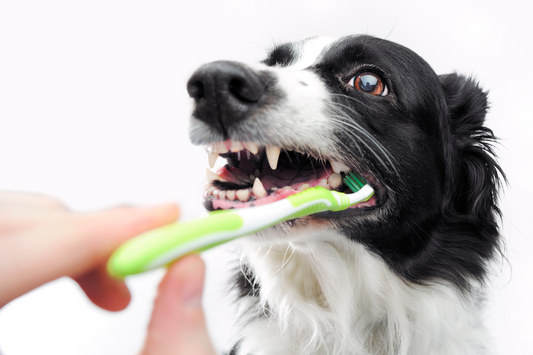After all the years of seemingly endless bursts of energy, there will come a time when your dogs will take it slow. These changes happen during what is called “the geriatric stage.” The way they play, rest, and navigate their daily routines will now differ. At this stage, pet owners are also encouraged to be keen on observing another major adjustment: feeding older dogs.
When Does the Geriatric Stage Begin?
The aging years begin when your dog hits their sixth or seventh year. By these years, your dogs already qualify as “senior dogs” and will start to exhibit a change in preferences including choosing to rest than play, eating slowly, and developing health concerns out of nowhere.Health issues caused by diet including osteoarthritis and obesity also emerge around these years. Experts encourage pet owners to observe when the signs of aging in dogs start to show up so they can make necessary diet changes as soon as possible.
Signs of aging in dogs include:
- Reduced appetite
- A significant change in energy
- Increased tiredness
- Weight loss
- Frequent drinking (a sign of diabetes or kidney failure)
- Smelly breath
- Lethargy
When you see the first signs of dog aging, work with your veterinarian for a diet plan fitted for older pets.
Feeding and Diet Changes for Older Dogs
With so many changes coming from their senior years, your older dogs may exhibit a different relationship towards food. To adapt to these changes, pet owners can incorporate several changes.
Feed Little, But Feed Often
Senior dogs are prone to having weak bones and muscles - a factor that makes gaining weight a downside for older pets. Geriatric dogs also digest food faster. The recommended way of adapting to this change in your pet’s diet is to give them nutrient-loaded food in small portions but at frequent intervals.
Keep the Feeding Environment Quiet
Anxiety in senior dogs can extend even in your pet’s feeding sessions. Small discomforts such as food tasting different or a rowdy environment can affect your pet’s gusto. When it comes to feeding time, keep your pet’s place calm and quiet.
Go for a Raised Food Bowl
If your pet also exhibits bone, joint, and muscle issues, opt for a raised bowl. Doing so can prevent pain from affecting the quality of feeding your dogs get.
Refrain from Overfeeding
Furparents, we get you - seeing your pet not eating enough of their usual portions can make you feel like they need more. Unfortunately, overfeeding can do more harm than good such as making senior dogs gain unnecessary weight and painful indigestion.
Find a Pet Food That Matches Your Dog’s Palate and Preferences
Older dogs are particularly choosy with what they eat. This avoidance to food can root from dental problems to nausea. Make sure the food they eat isn’t too hard to chew. Take the time to warm your pet’s food, too, to increase the quality of aroma and taste.
Nutrient Adjustment for Senior Dogs: What Older Dogs Need
Dog nutrition is individualized, and older dogs benefit a lot from a customized diet. A diet for older dogs has a significant difference in calorie content, fiber, carbohydrates, and protein. Although there is no cardinal rule for what and what not to give pets, vets often give guidance on what nutrients to prioritize for your aging dogs.
Low-calorie, high protein diets are perfect for dogs who need to lose weight
One of the major concerns surrounding aging pets is muscle mass. The older they get, the more they lose their lean muscle mass. Vets suggest dietary plans that will help preserve muscle mass for your pets for a longer time.
Since older dogs can’t eat as much, the best diet for senior dogs is one that contains low calories but is high in protein servings.
Aim for Low-Sodium, Low-Phosphorus diet plans for organ health
Your older dog has a higher chance of developing heart and kidney issues. For both concerns, pet owners should find food plans that are low in sodium and in phosphorus.
Not all dog food for senior dogs contains detailed information about sodium and phosphorus content but you can often find more details about your dog’s food content in a product website.
Add Supplements to Minimize Osteoarthritis
Pet owners of older dogs worry about the bone and muscle health of their fur babies. When they hit the senior years, you need to be more careful with protecting their bone, muscle, and joint health. One of the ways to help your dogs not succumb to painful bones and joints is to add supplements to their diet.
Supplements containing glucosamine and chondroitin are known to delay bone corrosion.
Also add Omega-3 to your dog’s diet as it helps tremendously in both bone and cognitive losses.
Questions to Ask the Vet
In your journey to knowing the best food to give to your aging dogs, your best partner is your veterinarian. You can ask them crucial questions to help you be guided when feeding your pet.
You can ask some or all of the following:
-
Your pet’s current condition and what diet changes are needed.
-
If your pet has officially entered the geriatric stage.
-
If there are any special ingredients you should be finding for your pet’s food.
-
The appropriate portion for your pet’s weight, age, and health status.
-
What supplements to give to your dogs.
-
Any special diets that will be essential for your aging dog.
Feeding older dogs take a lot of love and dedication. Ultimately, the people who will determine the best food for your aging pet are you and your vet. Follow the expert’s advice, or sometimes, follow your heart and your pet’s guide. At this stage, it never hurts to go for what both you and your dog loves.




